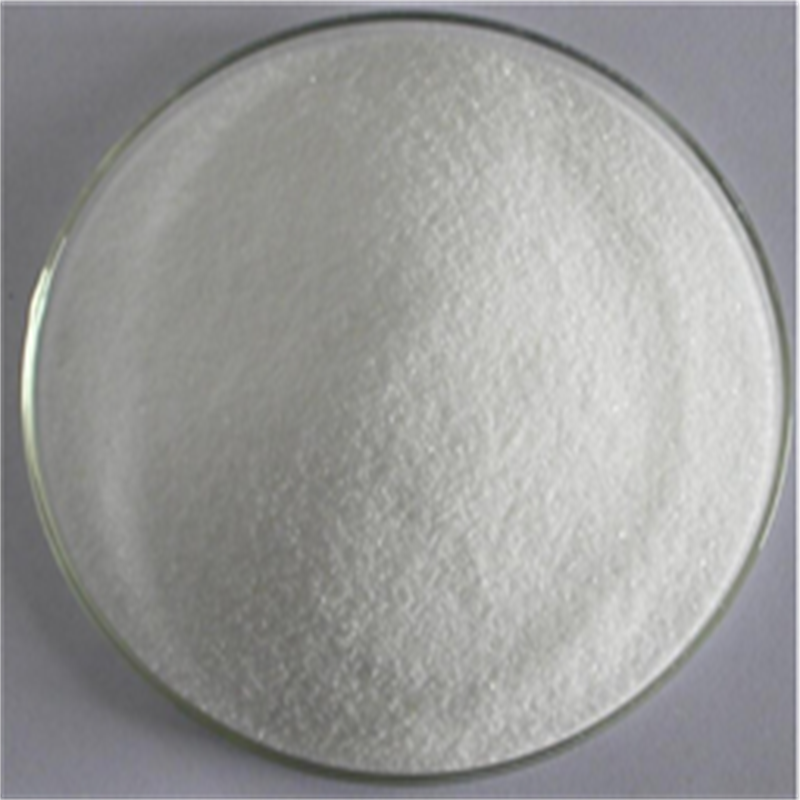-
Categories
-
Pharmaceutical Intermediates
-
Active Pharmaceutical Ingredients
-
Food Additives
- Industrial Coatings
- Agrochemicals
- Dyes and Pigments
- Surfactant
- Flavors and Fragrances
- Chemical Reagents
- Catalyst and Auxiliary
- Natural Products
- Inorganic Chemistry
-
Organic Chemistry
-
Biochemical Engineering
- Analytical Chemistry
-
Cosmetic Ingredient
- Water Treatment Chemical
-
Pharmaceutical Intermediates
Promotion
ECHEMI Mall
Wholesale
Weekly Price
Exhibition
News
-
Trade Service
Edited by Yimaitong, please do not reprint without authorization
.
The use of local anesthetics is not new to nephrology
.
In patients with hemodialysis and peritoneal dialysis, catheter insertion, arteriovenous fistula ligation and closure, and kidney transplantation are all inseparable from the use of local anesthetics
.
However, considering that patients with renal disease are often accompanied by different degrees of renal function damage, the pharmacokinetics of local anesthetics changes accordingly, and the clinical risk is relatively high.
It is particularly important to strengthen the standardized use and management of clinical local anesthetics in patients with renal insufficiency
.
This article briefly describes the pharmacological effects of common local anesthetics in nephrology, the effect of renal injury on their pharmacokinetics and common toxic reactions, and integrates relevant clinical studies to discuss the clinical significance of local anesthetics for nephropathy
.
1.
Pharmacological effects of local anesthetics Clinical local anesthetics are divided into esters and amides according to their chemical structures.
The routes of administration include intraspinal, perineural, intravenous, local infiltration and transdermal, which are mainly reversible after nerve cell membrane fusion.
It can block the voltage-gated Na+ channels of nerve fibers to achieve anesthesia effect, and can also affect K+ channels and Ca2+ channels, ligand-gated ion channel receptors and G protein-coupled receptors
.
2.
Pharmacokinetics of local anesthetics Common local anesthetics in nephrology include amide local anesthetics (articaine, lidocaine, levobupivacaine, bupivacaine, mepivacaine, prilocaine, Pivacaine) and ester local anesthetics (Obucaine, Procaine, Tetracaine)
.
The pharmacokinetics of various types of local anesthetics depend partly on the diversity of their chemical properties, but most share commonalities
.
The action of local anesthetics involves two factors, diffusion through the nerve sheath and membrane and binding at certain sites in the cell membrane
.
The diffusion rate of nerve sheath and nerve membrane is related to the ratio of non-ionized drugs, and those with lower plasma pKa values have faster onset
.
Lidocaine has the fastest action time among infiltrative local anesthetics, about 30s~1min, because of its low plasma pKa value
.
If the pH of the tissue is lowered, the onset of local anesthetic may be further prolonged or even ineffective
.
In addition, from the perspective of neuromorphology, cations inhibit the electrophysiological activities of peripheral nerves in the cell membrane, and the effect of local anesthetics can be weakened when the extracellular sodium is high
.
3.
The effect of renal injury on the pharmacokinetics of local anesthetics In patients with renal impairment, there are pathophysiological changes, which can directly affect drug absorption, manifested as enhanced absorption of local anesthetics at the injection site
.
Furthermore, renal function damage can lead to the increase of various natriuretic substances and cell dysfunction, which can promote the production of hypertension, so that patients can reach the peak plasma concentration earlier
.
In addition, the ability of the kidneys to clear metabolites and toxic substances is significantly reduced in patients with renal insufficiency, and the peak effects of local anesthetics and their metabolites may accumulate with prolonged infusion time, increasing the risk of clinical adverse events
.
In conclusion, the reasons why the pharmacokinetics of patients with renal insufficiency is affected may be related to the inhibition of biotransformation by renal metabolites and the effects of circulating pathogenic substances in uremic plasma on drug metabolism or uptake
.
4.
Common toxic reactions of local anesthetics (1) Allergy: rare, with an incidence of <1%, ester local anesthetics have a higher risk than amides; (2) Drug resistance: related to ion channel mutations/metabolic disorders; ( 3) Rapid desensitization reaction: not yet clear; (4) Injection-related complications: including needle stick injury, hematoma, abscess formation, abscess formation, necrosis, etc.
; (5) Muscle, connective and cartilage tissue damage; (6) Local Neurotoxicity; (7) Systemic toxicity: minor central nervous system toxicity (perioral tingling, metallic taste, tinnitus, dysarthria, restlessness, dizziness, somnolence, dysgeusia, tremor, vomiting, visual disturbance); major Central nervous system toxicity (restlessness, seizures, coma, respiratory distress); cardiovascular symptoms (arrhythmia, hypotension or hypertension, conduction disturbances),
etc.
5.
The application of local anesthetics in patients with renal disease under different operations Patients with chronic kidney disease (CKD) and end-stage renal disease may need to undergo hemodialysis, kidney transplantation, parathyroidectomy and other surgical treatments during clinical treatment.
The use of anesthesia is of great significance to the development of surgery
.
The creation of an arteriovenous fistula is a relatively common technique in surgery, and some studies have found that local anesthesia is more conducive to the patency of the arteriovenous fistula in patients
.
Brachial plexus block is the key to providing arm anesthesia to create an arteriovenous fistula.
Studies suggest that the duration of brachial plexus block in patients with CKD is shorter than that in patients with normal renal function, possibly because of increased cardiac output in renal failure, and then This results in an increased rate of systemic absorption of the drug
.
In addition, the clinical management of pain caused by arteriovenous fistula intubation is also inseparable from the use of local anesthetics.
A review study showed that the mixture of 2.
5% lidocaine and 2.
5% prilocaine (EMLA) was more effective than lidocaine and 2.
5% prilocaine.
Piroxicam gel or spray is better for pain relief
.
However, it is believed that excessive use of EMLA will increase adverse reactions such as methemoglobinemia, central nervous system toxicity, and cardiotoxicity
.
In addition, catheter placement during peritoneal dialysis also requires the use of local anesthesia.
For patients with renal disease who receive peritoneal dialysis catheter placement for transversus abdominis plane block, the upper limit of the dose of ropivacaine is 100-120 mg, and clinical application should avoid more than Upper limit, especially in patients with renal and cardiac insufficiency
.
For kidney transplant patients, in addition to general anesthesia, combined anesthesia under continuous low-dose local anesthetic infusion can also achieve ideal anesthesia effects and reduce the risk of general anesthesia-related adverse events
.
Secondary hyperparathyroidism is one of the common complications in patients with renal failure.
Local anesthesia is given to such patients, and the postoperative pain is less than that of general anesthesia, and the risk of adverse reactions such as nausea and vomiting is low
.
In conclusion, most of the local anesthetics are safe to use in patients with CKD and end-stage renal disease, and the safety index of amide local anesthetics is higher
.
In patients with advanced renal insufficiency, the absorption of local anesthetics increases, and the peak drug concentration can be reached more quickly and maintained at a high concentration
.
Therefore, the clinical application of local anesthetics for such patients should consider reducing the drug dose as appropriate, avoiding continuous infusion, and when repeated dosing is required, the dosing interval should also be increased
.
In addition, considering that local anesthetics have certain toxic reactions, and the use in patients with renal insufficiency will increase the risk of uremic neuropathy, clinicians should closely monitor the patient's tolerance to local anesthetics, and the dosage should also be based on the patient's age, Body weight, complications, etc.
are individually differentiated to minimize drug toxicity
.
References: [1] Uppal NN, Mital J, Hong S, et al.
Local anesthetics for the Nephrologist[J].
Clinical Kidney Journal, 2021,15(2):186-193.
[2] Aitken E, Kearns R , Gaianu L et al.
Long-term functional pa-tency and cost-effectiveness of arteriovenous fistula creation under regional anesthesia: a randomized controlled trial[J].
Journal of the American Society of Nephrology, 2020, 31(8):1871– 1882.
[3] Bromage PR, Gertel M.
Brachial plexus anesthesia in chronic renal failure[J].
Anesthesiology, 1972, 36(5):488-93.
[4] Tran AN, Koo JY.
Risk of systemic toxicity with topical lidocaine/prilocaine: a review[J].
J Drugs Dermatol, 2014,3(9):1118-22.
[5] Li Z, Tang XH, Li Q , et al.
Ultrasound-Guided Oblique Sub-Costal Transversus Abdominis Plane Block as the Principal Anesthesia Technique in Peritoneal Dialysis Catheter Implantation And Plasma Ropivacaine Concentration Evaluation In ESRD Patients: A Prospective, Randomized, Double-Blinded, Controlled Trial[J].
Perit Dial Int, 2018 , 38(3): 192–199.







